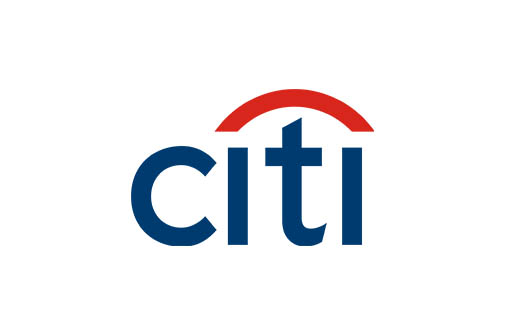Digitization is critical to the future of finance and treasury. To realize its fullpotential, companies should develop a framework and execution plan that incorporates a holistic approach. A good example of a company taking suchan approach is Shell, writes Swati Mitra, Global Practice Lead, Digital Client Advisory, Treasury and Trade Solutions, Citi.

The pace of technological change continues to accelerate. The past decade has seen entire industries transformed by new entrants driven by innovative business models and digital technology. Despite these major shifts, nothing could have prepared the world for COVID-19 and the way in which it has tested the resilience and scalability of business-critical functions and market infrastructure. In the main, corporates, banks and infrastructure providers have passed with flying colors; technology and digitization proved to be the salvation of our inter-connected world.
The impact of the pandemic combined with significant shifts in supply chain, the emergence of new technologies and business models is creating a tipping point for digital transformation in finance and treasury. There is heightened focus on finance analytics, technology optimization and digitization in an effort to achieve cost reduction and operational efficiency.
Citi’s Digital Diagnostic Framework
While the benefits of digitization are clear, developing a business case and addressing the scale of the transformation opportunity from digitization can seem daunting. A Harvard Business Review CEO and senior executive survey in 2019 found that while digital transformation is the #1 concern, 70% of all initiatives do not reach their goals. Digital technologies provide possibilities for efficiency gains and customer insight however, if a clear framework does not exist, if people lack the right mindset to change and if existing organizational practices are flawed, then digital transformation simply magnifies those flaws.
To help clients assess their current state of digital maturity and future priorities aligned to a company-wide digital agenda, Citi has developed a proprietary framework called Digital Diagnostic Framework. It has five key dimensions—strategy, culture, customer journey, process digitization and innovation—supported by a detailed checklist, client use cases and benchmarking insights.
The Framework emphasizes the importance of a holistic approach. When crafting a digital Strategy, it is important to ensure a balance between people, process, technology, business applications and data. Customer Journey requires new solutions for digital customer acquisition and differentiated services. Process Digitization focuses on optimizing back office operations, implementing tools to improve risk management and developing agile capabilities to compliment current or future technology architecture. Innovation relates to addressing unmet customer demands, designing new products and solutions and leveraging external partnerships to build or scale new businesses. Many corporates are trying to understand the relevance and prioritize investment in new technologies such as AI, robotics and blockchain. Since the maturity of these technologies is at varying stages, some companies are adopting a portfolio approach, i.e. they are deploying some solutions today, developing proofs of concept on others, and engaging in co-creation on more futuristic plans.
Culture is one of the most important dimensions as successful digital transformation is a function of change management, talent development, future proofing business models and rethinking innovation. Encouraging a mentality of innovation through hackathons, idea challenges, virtual collaboration and lean funding is essential to digital transformation.
Showcasing Shell Treasury’s Digital Journey
Digitization is a strategic priority for Shell. To deliver results, it is important to keep an open mind, focus on practical benefits, and prioritize collaboration in harnessing new technologies, writes Darsh Johal, Head of Global Cash Management, Shell International.
In 2018, Shell launched the CMX program to deliver World Class Cash Management for the future by deploying new technologies and digital capabilities to create value through innovative banking solutions. CMX adapts the current Cash Management model and focuses on Flawless Operations, Silent Banking, Plug & Play Connectivity, World Class People & Digital Solutions.
CMX identified both short-term and longer-term opportunities (missions) to leverage bank capabilities and new technologies and aim to deliver them using agile methodology. In 2019, the Shell CMX team identified around 90 missions and have since delivered 20. Some examples include Citi Payment Insights and SWIFT gpi, ERP Integrator and SpeedCollect. Many of these solutions have supported operational resilience during the current COVID-19 pandemic.
Although technology has been a key enabler, the key foundation of the program is understanding the full operating model in terms of how processes, data, technology and people interact. Darsh explains that “we look at every initiative with an operating model lens: if we implement this technology, what does that mean for our process, data or people? Or, if we change the process, what does that mean for technology, data or people?”
Collaboration, both within Shell and with external partners, is critical to digital transformation. At Shell, treasury has a strong relationship with IT, the business and the data team. In terms of external collaboration, treasury is looking to banks and technology partners to invest and develop new technologies.
Shell treasury’s digitization initiatives have helped support overall operational resiliency during the current COVID-19 pandemic.
As a result of CMX, when remote working began, they were able to rapidly transition to digital solutions for payments and collections and replace checks and other manual payments. Similarly, they were able to use soft tokens to enable portal entitlement and could improve multi-bank statement delivery and cross-bank liquidity management. Self-service using Citi Payment Insights proved to be invaluable; one of the more significant advances during the lockdown period has been the ability to electronically sign documents using electronic signatures.
While the current CMX strategy runs until 2025, given recent events, Shell treasury is reviewing how to accelerate plans and complete initiatives that are less reliant on new technologies by the end of 2021. This includes empowering 2 in a box teams to originate new ideas, translate them into missions and deliver them. To support this Shell has developed a new philosophy known as AD^3—accelerated design, accelerated decision-making and accelerated delivery with a #letsdoit! mindset. Shell are partnering with Citi on future collaboration using AD^3 and have an ambitious plan to achieve the new 2021 timeline. This will include delivery of some of the current and near term missions including digital onboarding, payment outlier detection, APIs, AR automation, payment gateways and greater use of self-service tools.
Sponsored content by:




